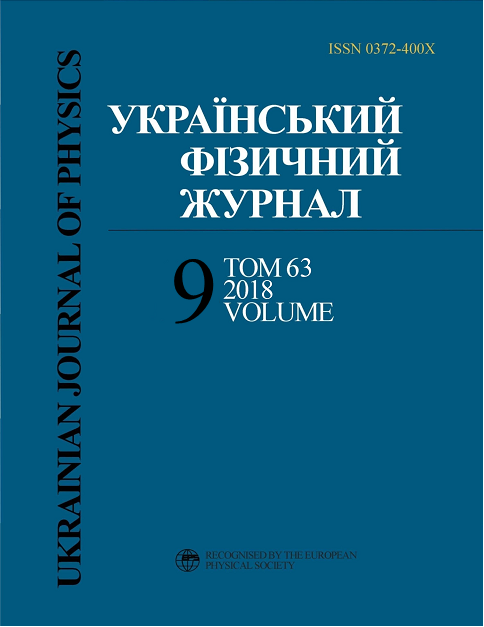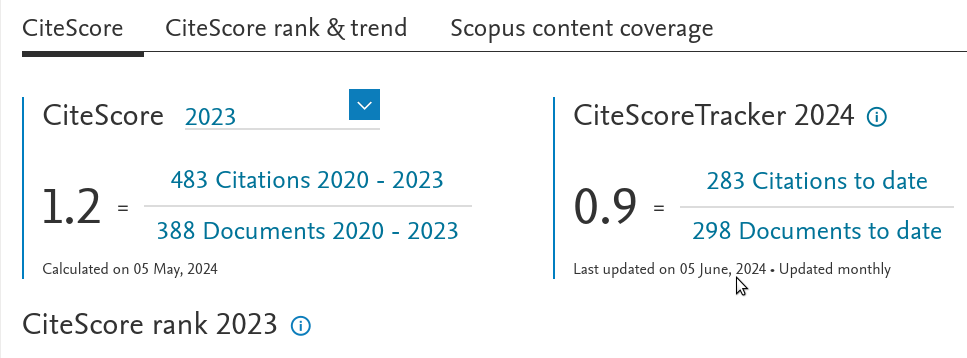Наноцелюлоза як основний композитний компонент електромеханічних датчиків
DOI:
https://doi.org/10.15407/ujpe63.9.828Ключові слова:
гетерокомпозити, наноцелюлоза, графен, функціонал електроної густини, псевдопотенціонал із перших принципівАнотація
Методами теорiї функцiонала електронної густини та псевдопотенцiалу iз перших принципiв, використовуючи авторський програмний комплекс, було розраховано просторовi розподiли густини валентних електронiв, густину електронних станiв, ширину забороненої зони, валентної зони та значення зарядiв в околi ядра атомiв для модельних композитних структур на основi наноцелюлози пiд механiчним впливом. Встановлено, що електроннi властивостi структур на основi наноцелюлози можна регулювати, наприклад, шляхом змiн вiдстаней мiж шарами композитних компонентiв при механiчному впливi.
Посилання
<li>S. Ummartyotin, M. Sain. Cellulose Composite for Electronic Devices (Thammasat Univ., 2016).
</li>
<li>HORIZON 2020 – Work Programme 2016–2017. Cross-cutting activities (Focus Areas), PILOTS-05-2017: Paper-based electronics.
</li>
<li>L. Valentini, M. Cardinali, E. Fortunati. Nonvolatile memory behavior of nanocrystalline cellulose/graphene oxide composite films. J. M. Appl. Phys. Lett. 105, 153111 (2014).
<a href="https://doi.org/10.1063/1.4898601">https://doi.org/10.1063/1.4898601</a>
</li>
<li>Chaoyi Yan et al. Highly stretchable piezoresistive graphene–nanocellulose nanopaper for strain sensors. Adv. Materials 26 (13), (2014).
<a href="https://doi.org/10.1002/adma.201304742">https://doi.org/10.1002/adma.201304742</a>
</li>
<li>Abdullahil Kafy et al. Cellulose/graphene nanocomposite as multifunctional electronic and solvent sensor material. Mat. Lett. 159, 20 (2015).
<a href="https://doi.org/10.1016/j.matlet.2015.05.102">https://doi.org/10.1016/j.matlet.2015.05.102</a>
</li>
<li>Ab initio calculation [E-resource] – Mode access to the resource: http://sites.google.com/a/kdpu.edu.ua/calculationphysics.
</li>
<li>N. Yakovkin, P.A. Dowben. The problem of the band gap in lda calculations. Surface Rev. Lett. 14 (3), 481 (2007).
<a href="https://doi.org/10.1142/S0218625X07009499">https://doi.org/10.1142/S0218625X07009499</a>
</li>
<li>E.S. Kryachko, E.V. Lude?na. Density functional theory: Foundations reviewed. Phys. Rep. 544, 123 (2014).
<a href="https://doi.org/10.1016/j.physrep.2014.06.002">https://doi.org/10.1016/j.physrep.2014.06.002</a>
</li>
<li>Claudia D. Simao, Juan S. Reparaz, Markus R. Wagner, et al. Optical and mechanical properties of nanofibrillated cellulose: Toward a robust platform for next-generation green technologies. Carbohydrate Polymers 126, 40 (2015).
<a href="https://doi.org/10.1016/j.carbpol.2015.03.032">https://doi.org/10.1016/j.carbpol.2015.03.032</a>
</li>
</ol>
Downloads
Опубліковано
Як цитувати
Номер
Розділ
Ліцензія
Ліцензійний Договір
на використання Твору
м. Київ, Україна
Відповідальний автор та співавтори (надалі іменовані як Автор(и)) статті, яку він (вони) подають до Українського фізичного журналу, (надалі іменована як Твір) з одного боку та Інститут теоретичної фізики імені М.М. Боголюбова НАН України в особі директора (надалі – Видавець) з іншого боку уклали даний Договір про таке:
1. Предмет договору.
Автор(и) надає(ють) Видавцю безоплатно невиключні права на використання Твору (наукового, технічного або іншого характеру) на умовах, визначених цим Договором.
2. Способи використання Твору.
2.1. Автор(и) надає(ють) Видавцю право на використання Твору таким чином:
2.1.1. Використовувати Твір шляхом його видання в Українському фізичному журналі (далі – Видання) мовою оригіналу та в перекладі на англійську (погоджений Автором(ами) і Видавцем примірник Твору, прийнятого до друку, є невід’ємною частиною Ліцензійного договору).
2.1.2. Переробляти, адаптувати або іншим чином змінювати Твір за погодженням з Автором(ами).
2.1.3. Перекладати Твір у випадку, коли Твір викладений іншою мовою, ніж мова, якою передбачена публікація у Виданні.
2.2. Якщо Автор(и) виявить(лять) бажання використовувати Твір в інший спосіб, як то публікувати перекладену версію Твору (окрім випадку, зазначеного в п. 2.1.3 цього Договору); розміщувати повністю або частково в мережі Інтернет; публікувати Твір в інших, у тому числі іноземних, виданнях; включати Твір як складову частину інших збірників, антологій, енциклопедій тощо, то Автор(и) мають отримати на це письмовий дозвіл від Видавця.
3. Територія використання.
Автор(и) надає(ють) Видавцю право на використання Твору способами, зазначеними у п.п. 2.1.1–2.1.3 цього Договору, на території України, а також право на розповсюдження Твору як невід’ємної складової частини Видання на території України та інших країн шляхом передплати, продажу та безоплатної передачі третій стороні.
4. Строк, на який надаються права.
4.1. Договір є чинним з дати підписання та діє протягом усього часу функціонування Видання.
5. Застереження.
5.1. Автор(и) заявляє(ють), що:
– він/вона є автором (співавтором) Твору;
– авторські права на даний Твір не передані іншій стороні;
– даний Твір не був раніше опублікований і не буде опублікований у будь-якому іншому виданні до публікації його Видавцем (див. також п. 2.2);
– Автор(и) не порушив(ли) права інтелектуальної власності інших осіб. Якщо у Творі наведені матеріали інших осіб за виключенням випадків цитування в обсязі, виправданому науковим, інформаційним або критичним характером Твору, використання таких матеріалів здійснене Автором(ами) з дотриманням норм міжнародного законодавства і законодавства України.
6. Реквізити і підписи сторін.
Видавець: Інститут теоретичної фізики імені М.М. Боголюбова НАН України.
Адреса: м. Київ, вул. Метрологічна 14-б.
Автор: Електронний підпис від імені та за погодження всіх співавторів.

















